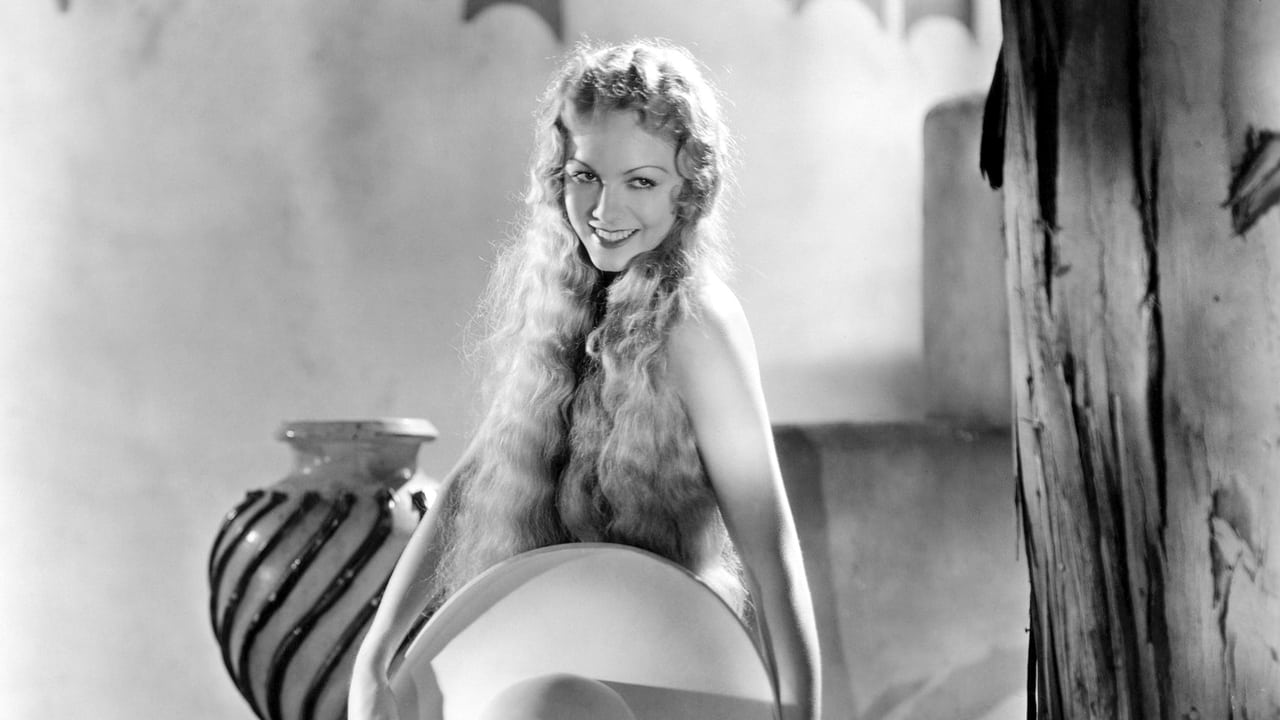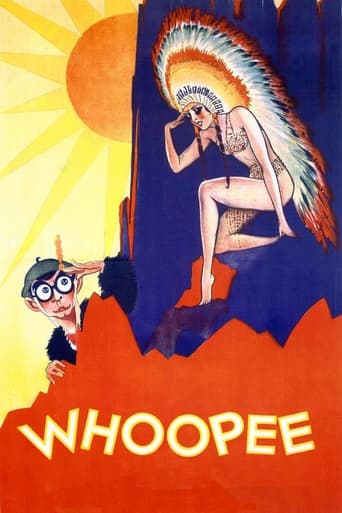

Wonderful character development!
... View MoreJust so...so bad
... View MoreExcellent and certainly provocative... If nothing else, the film is a real conversation starter.
... View MoreAmazing worth wacthing. So good. Biased but well made with many good points.
... View More"Whoopee!" was the first film that Busby Berkeley did the choreography for; he would later surpass his work here, but his innovative, synchronized numbers are an indication of things to come. It was also the feature-length talkie screen debut for Eddie Cantor; one way to advertise him would be "all 4 Marx Brothers rolled into 1"! He has energy to spare. Of course his jokes often miss - but what comedian can claim a 100%, or anything close to it, success rate? His "recital" of "Making Whoopee" and "A Girlfriend of a Boyfriend of Mine" is inimitable. The film is loaded with sexual innuendo (some of it blatantly homoerotic) and hip (then) pop references (from Al Jolson to Ronald Colman); it's overlong, set-bound and dated in some aspects, but there is a lot to enjoy here. *** out of 4.
... View MoreThis film is a hoot. Based on Ziegfeld's 1928 Broadway show, Whoopee, filmed entirely in two-strip Technicolor is hysterically funny in spots, politically incorrect in others. The film is an excellent showcase for the bygone charms of Eddie Cantor, who spouts off one funny line after another. The musical numbers are the very first choreographed by the great Busby Berkeley. And the fantastic costumes worn by the first Goldwyn Girls show the influence of Ziegfeld, who was listed as co-producer along with Samuel Goldwyn. The films of Eddie Cantor are hard to come by on DVD, so I consider myself lucky to have obtained a lovely copy of this rare film.
... View MoreThis is one of the oldest surviving all-color talking films. The only other one I can think of from 1930 that is still with us is Universal's "King of Jazz" and "Under a Texas Moon". It will probably seem odd to you at first that the sheriff and his deputies - I assume they are deputies - are all dressed in rather cartoonish over-sized cowboy hats and pink scarves, but you have to remember two things. First this is, at heart, a musical farce and the costumes are part of that farce. Secondly, remember that two-strip Technicolor was all they had in 1930, that it was still considered a treat by the public, and that pink and blue were the colors this process rendered best.The tale that acts as a vehicle for all of Eddie Cantor's antics is a simple one, and one that is repeated in several films over the years - that of forbidden love between races. Sally, a white girl, falls in love with Wanenis, an Indian. Since such marriages were forbidden, Wanenis goes away into the wilderness to deal with the fact they cannot be together. In the meantime, Sally's father arranges for her to marry Sheriff Bob Wells. Wanenis returns on Sally's wedding day, not knowing it is her wedding day. When Sally sees Wanenis, she knows she cannot go through with the sham wedding and runs away. The fun comes in with how she runs away. She tells sickly Henry Williams (Eddie Cantor) that she and Bob are planning to elope, and that she needs him to drive her into the next town. However, she leaves a note for everyone else saying she has eloped with Henry. Not only is the vengeful sheriff, his men, and Sally's father soon hot on their trail, but Henry's aggressively love-sick nurse is after them too. Only Wanenis finds this whole thing an odd turn of events and takes a short cut to go looking for them, separate from the rest of the pack. Complications and opportunities for Cantor's always enjoyable remarks, eye movements, and musical interludes ensue.This film survives intact in splendid shape, and the Technicolor truly yields a spectacular painted desert. Although best remembered songs from this film will always be title song "Makin' Whoopee" and "My Baby Just Cares For Me", both performed by Eddie Cantor, I also really liked the love ballad sung by the star-crossed lovers Sally and Wanenis -"I'll Still Belong to You". It has an operatic quality that is typical of love songs from that era, and oddly enough was written by Nacio Herb Brown of MGM songwriting fame.Finally, let me mention the fact that some of the racial aspects of this film might leave the modern viewer squeamish such as the stereotypes of native peoples and the fact that Eddie Cantor usually appeared in black-face as part of his act and does here too. Try to remember that none of this is out of character for a film made 80 years ago and no mean-spiritedness was intended at the time. Highly recommended for a chance to see Eddie Cantor in one of his best.
... View MoreEddie Cantor's a legend name of showbiz, but he's been lost to time, unlike, say, Laurel and Hardy or Jack Benny. Mainly, we've just heard his name. Whoopee! is a chance to finally see his act and--well, uh--he was quite energetic. The film's really just an excuse for Cantor to strut his stuff, so your loving of the film will depend mostly of your love of Eddie.However, there are several things for a film buff to enjoy. The early two-strip Technicolor is quite nice and the print I've seen on TV is really quite gorgeous. (It seems strange that this, of all early talkies, would have been so well preserved.) Outside of Cantor's vaudeville style, Whoopee! feel nearly it's age. The camerawork can be quite clunky at times, like the jiggly attempt at an overhead shot during a dance number, but generally its acceptable for a simple musical. Additionally, the dances were the work of a young Busbey Berkley and you can tell it's his handiwork. Oddly, the dancers seem to have a problem dancing in-sync with one another, which seems to be a hallmark of every early musical I've ever seen.
... View More